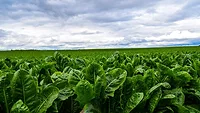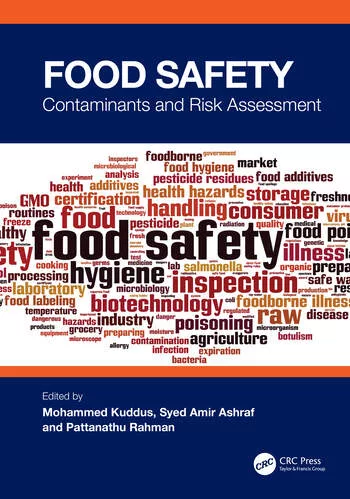Humidity, Bacterial Leaf Spot Increase Salmonella Survival on Leafy Greens

Image credit: jcomp via Freepik
A recent study has demonstrated that the risk of foodborne Salmonella enterica infection from raw produce increases with high humidity, which is predicted to worsen due to climate change, and that certain plant diseases can aid the survival of Salmonella on leafy greens.
Fresh produce consumption is one of the most common routes of S. enterica infection, and the pathogen causes about 1.2 million illnesses in the U.S. every year. S. enterica can survive for extended periods of time on plants, and scientific literature has shown the ability of the pathogen to take advantage of changes to the microbial community on crops. For example, increased persistence of S. enterica has been observed on plants infected with bacterial phytopathogens, which are pathogens that cause disease in plants.
One such bacterial phytopathogen is Xanthomonas hortorum pv. Vitians, which causes a disease called bacterial leaf spot and is a common threat to leafy greens. Additionally, environmental factors like humidity are known to support Salmonella survival on healthy plants.
In the present study, the researchers sought to understand how both humidity and bacterial leaf spot affect the ability of Salmonella to survive on leafy greens crops. To do so, they infected plants with X. Vitians and introduced Salmonella to the plants via water droplets to mimic contamination by irrigation or splash dispersal from the ground. The researchers varied the days along a plant’s development at which X. Vitians was introduced, the periods of high and low humidity to which a plant was subjected, and how many days they waited after introducing Salmonella to a plant to measure its internal Salmonella population. The internal Salmonella population represents those pathogens that successfully move from a leaf surface to the interior of the plant, where microbes are protected from solar rays or postharvest sanitization treatments.
The researchers found that bacterial leaf spot caused by X. Vitians aids S. enterica survival and internalization within romaine lettuce, and that S. enterica’s survival is dependent upon the timing of arrival during infection with bacterial leaf spot. If Salmonella is introduced to a plant too early or too late along its timeline of infection by X. Vitians, then either the plant’s raised defenses or the plant disease itself will inhibit S. enterica survival, respectively.
Moreover, high humidity—predicted to increase globally as an effect of climate change—and the water-soaked lesions caused by bacterial leaf spot also enhance the ability of Salmonella to rapidly grow in lettuce.
Looking for quick answers on food safety topics?
Try Ask FSM, our new smart AI search tool.
Ask FSM →









